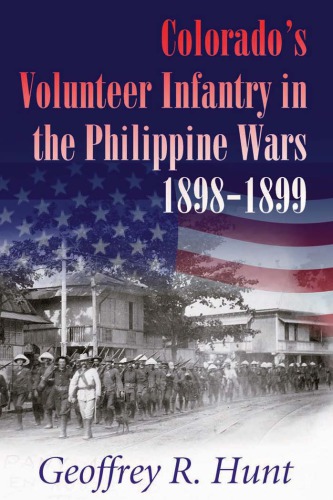

Most ebook files are in PDF format, so you can easily read them using various software such as Foxit Reader or directly on the Google Chrome browser.
Some ebook files are released by publishers in other formats such as .awz, .mobi, .epub, .fb2, etc. You may need to install specific software to read these formats on mobile/PC, such as Calibre.
Please read the tutorial at this link: https://ebookbell.com/faq
We offer FREE conversion to the popular formats you request; however, this may take some time. Therefore, right after payment, please email us, and we will try to provide the service as quickly as possible.
For some exceptional file formats or broken links (if any), please refrain from opening any disputes. Instead, email us first, and we will try to assist within a maximum of 6 hours.
EbookBell Team

5.0
58 reviewsThe First Colorado Regiment enlisted in 1898 to fight Spaniards in Cuba, but ended up fighting in the Philippines. Before they could join the campaign in Cuba, Commodore George Dewey's United States Navy squadron destroyed the Spanish fleet at Manila in May 1898. Dewey lacked the infantry necessary to seize the city itself, so the Colorado militia was rushed to the Philippines. The Colorado troops led the assault on Manila, seizing Fort San Antonio de Abad and raising the first American flag over the capitol city.
With the Spanish-American War over, the Filipinos expected independence. When it was clear independence would not be granted, tensions between the Filipinos and the Americans mounted until they escalated into battle in February 1899. The Coloradoans fought against the Filipinos in what came to be called the Philippine Insurrection. The war to free Cubans from Spanish rule had become a war to subject Filipinos to American rule.
The First Colorado Infantry represents the expectations and experiences of citizen soldiers in America's quest for empire at the end of the nineteenth century. In his study, Geoffrey Hunt includes charts that document the reorganization of the Colorado National Guard during the late nineteenth century, the U.S. Army command structure in the Philippines, 1898-1899, and the volunteer regiments' members' deaths in the Philippines.